Ayun Stream and Tanur Waterfall – Visitors Guide
Ayun Stream Nature Reserve has two excellent trails – the long track visits four waterfalls, and the short path goes to Tanur waterfall.
Table of Contents
Map
Ayun Stream Nature Reserve is located near Israel’s Northernmost Town, Metula.
Directions for drivers: Link to Waze and Link to Google Maps
Directions for public transport: Link to Moovit
Interactive map of the area:
Note: the direction above will point you to the main entrance near Tanur waterfall.
And here is a map of Ayun Stream Nature Reserve:
Note: you can click on the map to enlarge it.
Hikes and Tracks
As you can see from the map, there are two options for exploring Ayun Stream Nature Reserve.
- The long track at Ayun Stream – you can start at the top (where I wrote “Weiss Grove” with a blue pen) and go along the stream to the lower parking. As this trail goes downhill, there are many steps (you go from 500 meters to 350 meters above sea level). It took us two hours to complete this trail at a moderate pace with some stops.
Also, since it is not a loop trail, we left the car at “Weiss Grove.” When we reached the lower parking, I (the car driver) took the shuttle back to “Weiss Grove.” The price was 10 NIS per person, and you can purchase tickets at the shop by the lower parking. If you plan on using the shuttle, I suggest contacting them and verifying a shuttle will be available. See contact details below. - Short trail – starts at the lower parking and explores only this area. You can visit Tanur waterfall and the waddling pools and picnic tables. Another benefit of this area is the accessible route.
The trail for disabled persons and children’s strollers – the last part of the walking route in the nature reserve, from the Tanur Waterfall down to the southern camping site has been made accessible for people who have difficulty walking.
Note: All quotes were taken from the official site unless stated otherwise.
Note: at Ayun Stream Nature Reserve, you can enter the water only in the waddling pools at the lower parking.
Directions
If you are reaching by car, enter “Ayun Stream Nature Reserve” into Waze or Google Maps, which will take you to the main entrance – the lower parking. But keep in mind there are two entrances to this nature reserve. And if you want to take the long hike, enter “Weiss Grove” into Waze, or click this link to Waze (or enter the following coordinates: (33.282099,35.582603)).
Contact Information
Phone: 04-6951519
Email: st-iyyon@npa.org.il
Opening Hours
Sunday – Thursday and Saturday: 8:00 – 17:00 (16:00 in winter).
Friday: 8:00 – 16:00 (15:00 in winter).
On holiday eves, usually 8:00 – 13:00.
Note: Since the pandemic, the Israel Nature and Parks Authority has started limiting the number of people in each park. Thus, reservations are recommended through the official site (you can find the link below).
Entrance Fee
Adult 28 NIS, child 14 NIS, and student 24 NIS. And free for National Parks` annual subscribers.
If you visit several National Parks, then consider purchasing a combo ticket. You can find additional info at National Parks And Nature Reserves.
Note: opening hours and ticket prices were updated in January 2023. In any case, recheck the official site before visiting.
Nahal Iyyon
Nahal Iyyon is a perennial stream in the Galilee Panhandle, Israel. The stream originates from the springs in the Marjayoun valley in southern Lebanon. It runs southward for seven kilometers in various irrigation ditches until flowing into Israel near Metula as a tributary of the Jordan River in the Hula Valley.
Differences in elevation form waterfalls in the course of the stream. During the rainy winter months, the water flow is strongest. During the summer months, water is diverted closer to the stream’s sources for crop irrigation. These falls were declared a nature reserve and include:
- Iyyon waterfall, 9.2 meters
- Tahana (“flour mill”) waterfall, 21 meters
- Eshed (“lion”) waterfall, with two steps, 5 meters and 9 meters
- Tanur (“oven”) waterfall, 30 meters
Source: Wikipedia
The Long Track at Ayun Stream
As I mentioned above, we parked at “Weiss Grove” and entered the nature reserve from the upper entry. You take the blue track (the only trail) from that point and start the descent.

The Nahal Ayun gorge and its waterfalls – a walking route for hiking buffs. Walking down the stream from the northern camping area close to Metula down to the southern camping area is recommended. The route is not circular, and you will need to leave a car at the termination point in the southern camping area. The gorge’s major attraction is the waterfalls – the Ayun waterfall, the Mill waterfall, the Cascades, and the Tanur waterfall. These waterfalls flow all year round, and along the channel, water vegetation is abundant.
Two of the waterfalls are considered especially beautiful and impressive: The Mill Waterfall – relatively broad, 21 meters high, alongside which are the remains of a flour mill that, in the past, was the only flour mill in the country under Jewish ownership; and the Tanur Waterfall, 30 meters high, one of the highest perennial streams in Israel.
Within less than 10 minutes, we reached the first waterfall.
Iyon Waterfall

Iyon Waterfall is 9.2 meters high, and the entrance to the water is forbidden.

And from the Iyon Waterfall, we continued along the trail.
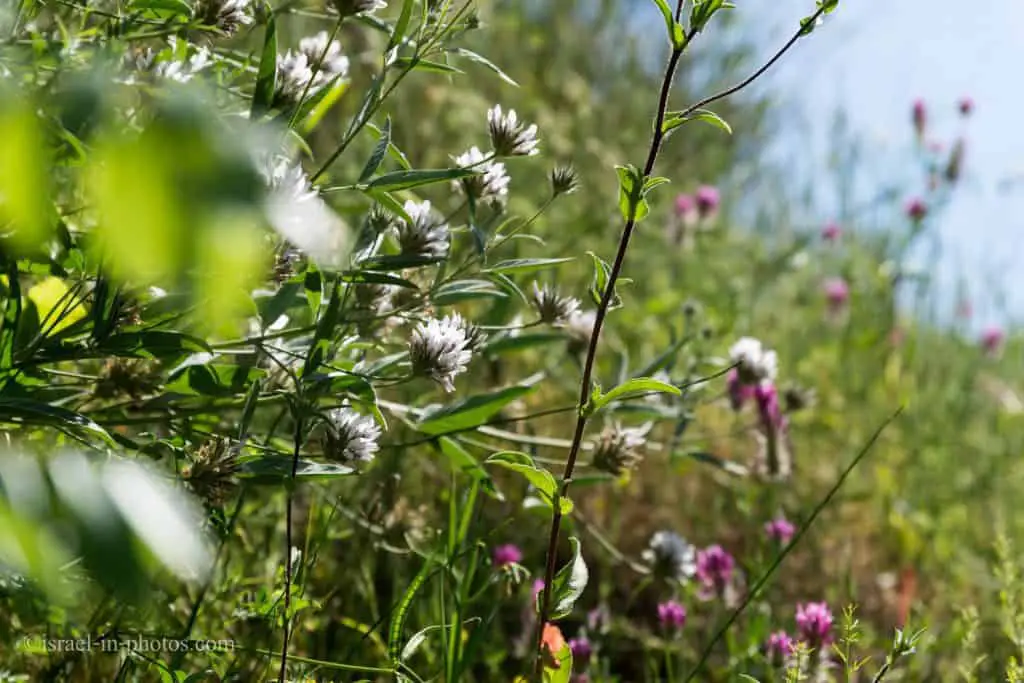
As you hike along the trail, you will see a fence (behind the tree line in the following photo) to your left. The hill above it is Lebanon.



As we hiked, we saw many Eucalyptus trees.
Eucalyptus Tree
Eucalyptus is a genus of over seven hundred species of flowering trees, shrubs, or mallees in the myrtle family, Myrtaceae. Along with other genera in the tribe Eucalypteae, they are commonly known as eucalypts. Plants in the genus Eucalyptus have bark that is either smooth, fibrous, hard, or stringy, leaves with oil glands, and sepals and petals that are fused to form a “cap” or operculum over the stamens. The fruit is a woody capsule commonly referred to as a “gumnut.”
Most species of Eucalyptus are native to Australia, and every state and territory has representative species. About three-quarters of Australian forests are eucalypt forests. Wildfire is a feature of the Australian landscape, and many eucalypt species are adapted to fire and resprout after a fire or have seeds that survive a fire.
Source: Wikipedia
Eucalyptus trees were brought to Israel from Australia. Eucalyptus trees were selected since they grow fast and drink lots of water. Extensive water consumption is usually considered a minus, but there were many swamps in Israel in the middle of the previous century. Mosquitos live in wetlands and infect people and animals with Malaria. And since Malaria was a big issue, Eucalyptus trees were planted to dry up swamps. In other cases, like Agamon Hula, swamp drainage was performed.
But since Malaria is not an issue anymore, Israel Nature and Parks Authority work on decreasing the number of Eucalyptus trees. As I mentioned above, since Eucalyptus trees grow fast, they prevent other species from developing. Thus, limiting their number will allow other local species to develop.


I know it is hard to see, but a herd of sheep is on top of the opposite mountain (these are not rocks). And there are shepherds with them. They are across the border in Lebanon.

Tahana Waterfall
And now we are starting our descent towards the Tahana waterfall.

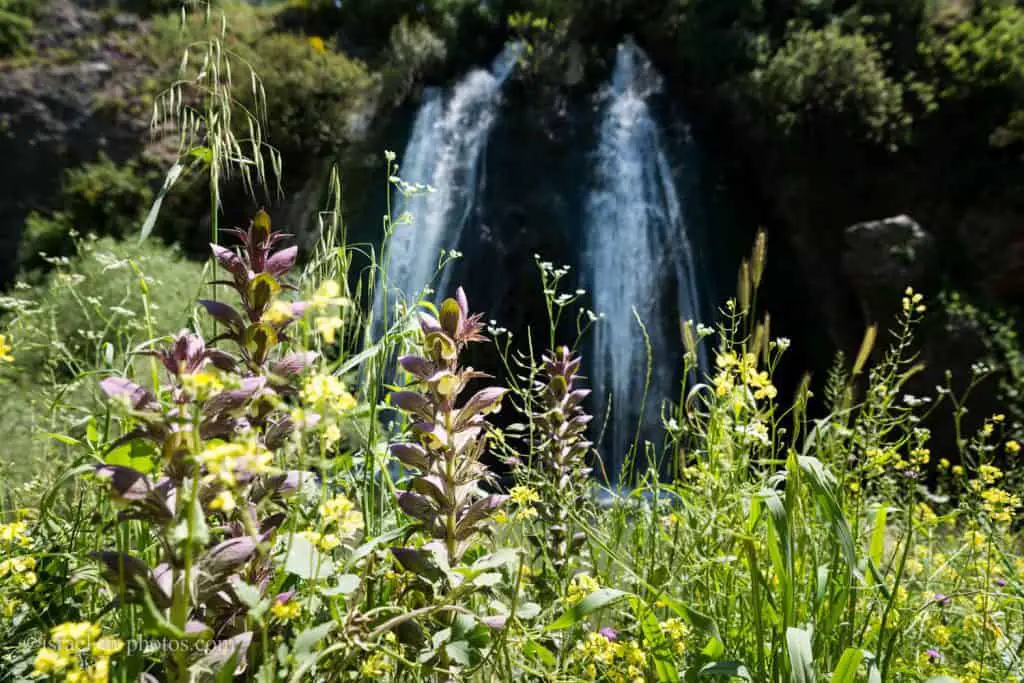
The Tahana waterfall is quite impressive. It is relatively broad, and its height is 21 meters. This waterfall was named after a flour mill, the only flour mill in the country under Jewish ownership (at that time).
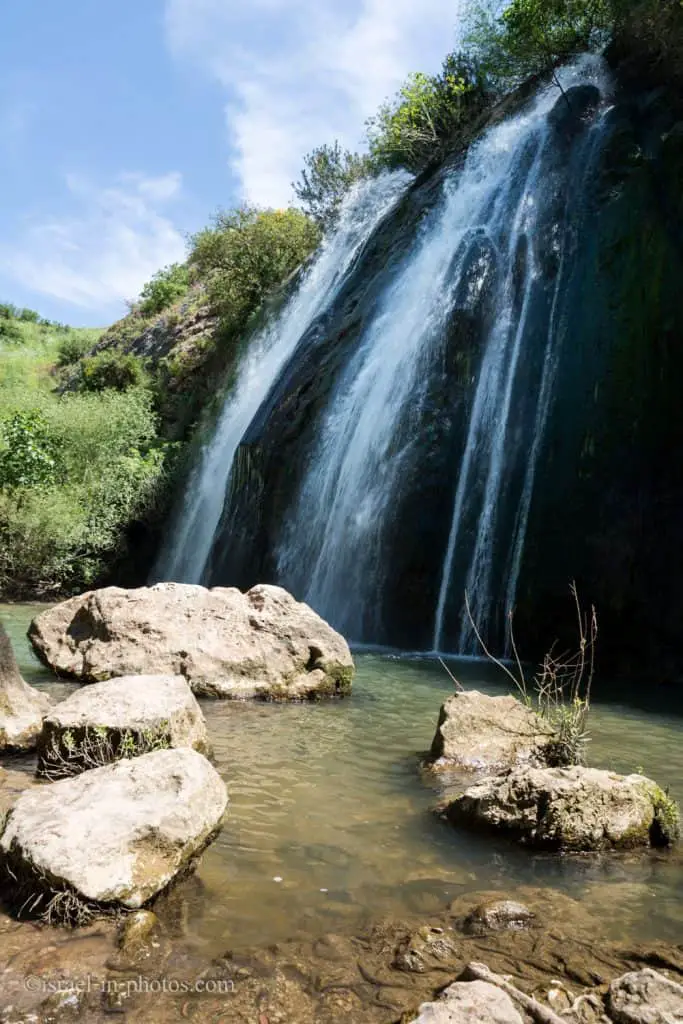
The residents of Metula exploited the waters of the stream and the surrounding springs for drinking, irrigating their fields, as well as for milling flour in the flour mill at the Mill Falls, which Baron Rothschild purchased. This flour mill boasts the highest chimney in Israel (15 meters). The mill was abandoned when the residents of Metula fled in 1920, after the fall of Tel-Hay, and its operation was never resumed even after they returned.
The next waterfall that we reached was Eshed waterfall. But there was no clear view since it was blocked by greenery.

Tanur Lookout Point (Gafni)
Our next stop was Tanur Lookout Point.

The Tanur Lookout Point (Gafni) – an impressive observation point from which the Tanur Falls can be seen, with a view of the Hills of Naftali and the Hula Valley. A steep path with many stairs reaches the lookout point.


Tanur Waterfall
After we completed the descent from the Tanur lookout point (shown in the photo above), we headed to the Tanur Waterfall. It is the highest waterfall at Ayun Stream Nature Reserve – 30 meters.
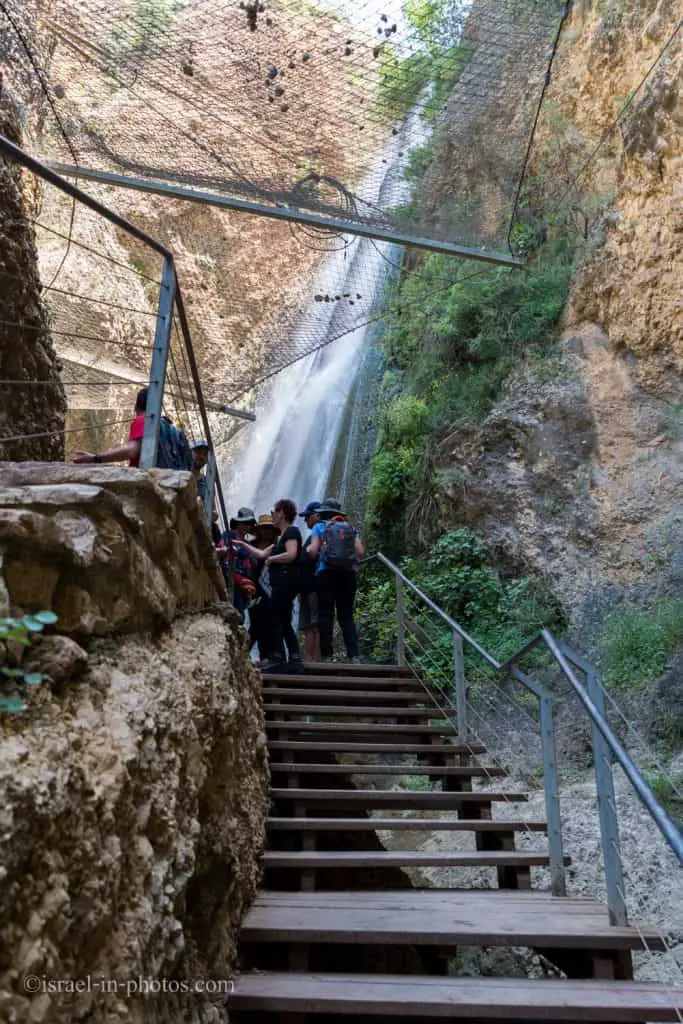
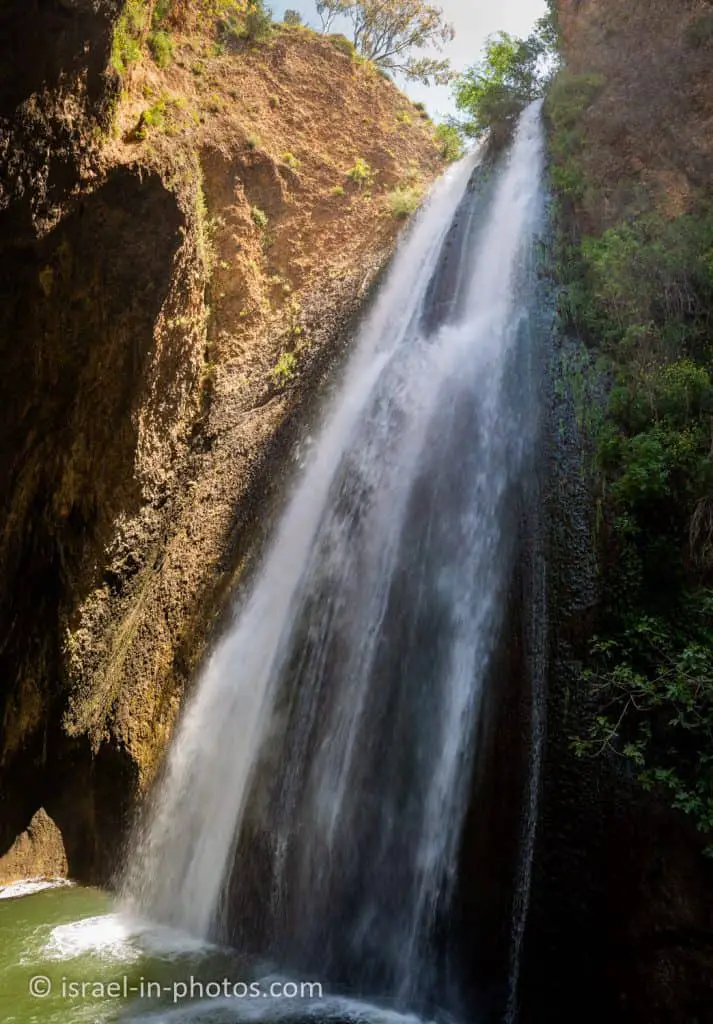
Tanur means oven in Hebrew. One explanation for the name is the similarity in the appearance of the upper part of the waterfall to a traditional Arab-style oven. But the name might also come from the Arabic word Tanura, the traditional skirt worn by Arab women.
After completing the track, I purchased a shuttle ticket and returned to pick up the car.
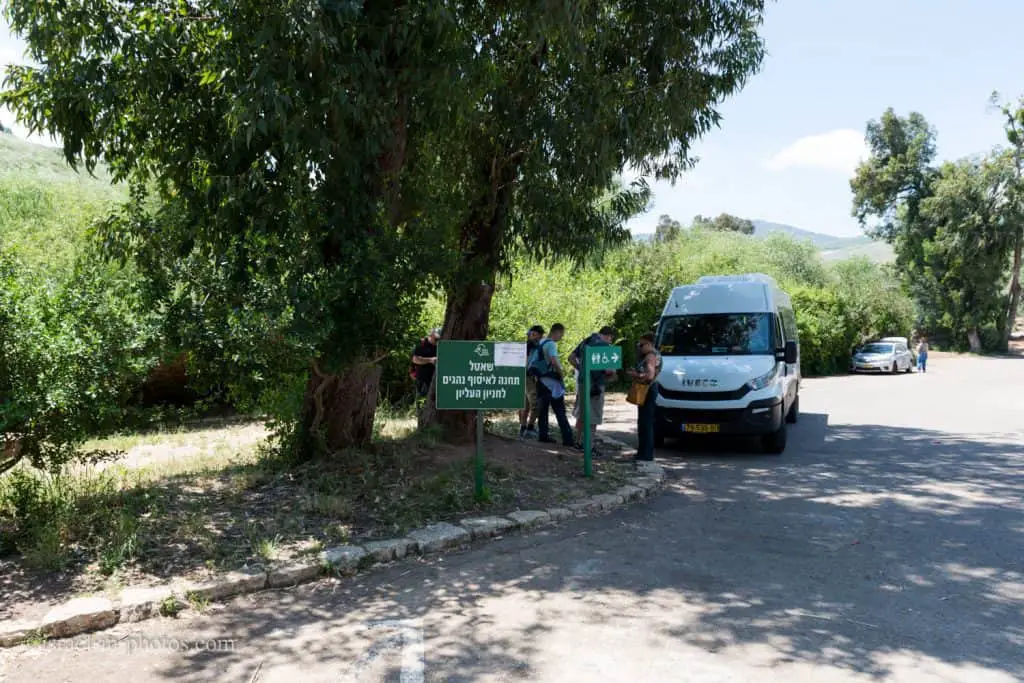
When I returned to the lower parking, I found my wife and daughter at the wading pool. It is the only place in Ayun Stream Nature Reserve where you can enter the water.
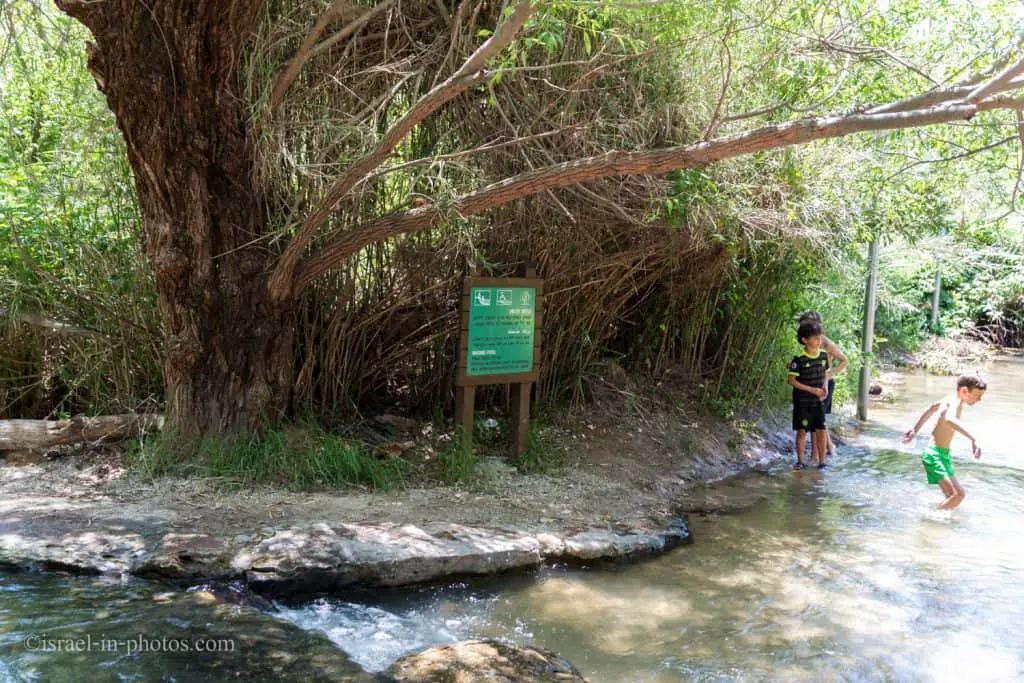
And then, we headed to the picnic tables for lunch.
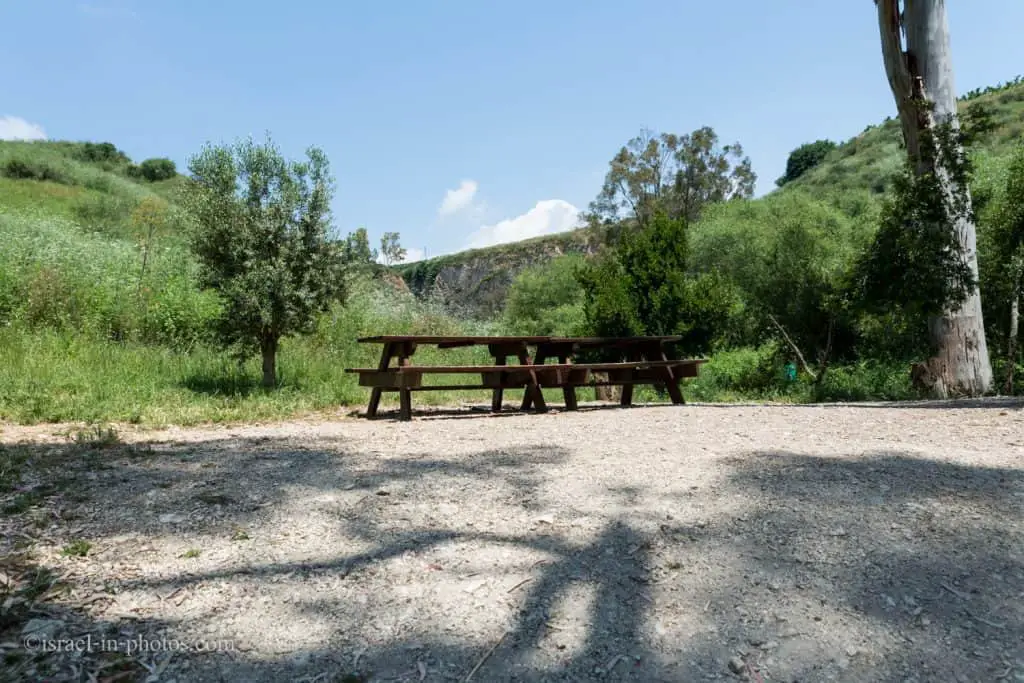
After lunch, we headed to see another waterfall, Saar Falls. And if you love water and nature, I suggest checking out the nearby Tel Dan Nature Reserve, Banias Nature Reserve (Hermon Stream), Snir Stream Nature Reserve (Hasbani), and Amud Stream Nature Reserve.
Day Camping and Parking Areas
As I mentioned in the Tracks section, there are two entrances. And near each one, there is a day camping/parking area for picnics.
Day camping/parking area for picnics in the northern area of the stream – the camping area is located at the edge of the Moshava Metula. It is the northern entry gate into the nature reserve. There is a well-established eucalyptus grove here, suitable for picnics and barbeques. There are toilets in the camping area for visitors’ use, and it is permitted to light fires in the area.
Day camping/parking site for picnics with three paddling pools – the southern camping site is the nature reserve’s main camping/parking area, serving both hikers on the long route and those visiting the Tanur Waterfall only. There is a stand of trees at the campsite with picnic tables, and it is permitted to light fires there. There are also toilets, a kiosk selling snacks, and three new paddling pools, enabling visitors to enjoy the abundance of water in the stream.
Hydrology
Ayun Stream is one of the four sources of the Jordan River. And here is additional info from the official site:
A unique human-made situation was maintained for many years in Nahal Ayun – perennial springs with a stream that runs dry in summer.
The stream’s principal springs rise in Lebanon (En el’Kutsir and En Dardara), and every summer, the whole quantity of their water is exploited by the Lebanese farmers. That led to the stream flowing through Israel running dry in summer. All that changed in 2009, when Israel began artificially channeling water from the Dan springs into the reserve.
Nahal Ayun is one of the four sources of the Jordan River. The stream was originally a perennial stream whose flow increased strongly in winter. Its average capacity is 1.5 cubic meters per second, and when flooding occurs, it even attains 25 cubic meters per second. Due to the exploitation of the water in Lebanon, the flow in the stream dries up in summer, except for a few small springs (En Sukhra, the Cascades spring, and the Tanur spring). And the deep pools at the foot of the waterfalls serve as havens for fish and some unique vertebrates.
Since 2009, water has been channeled from the Nahal Dan to Nahal Ayun in the summer months to recreate the perennial stream’s natural appearance. The flow scope is 80 cubic meters per hour, and it is done with the help of the “Yuval Water” Society. The choice of Nahal Dan’s waters was made after examining the quality of the water in a few places.
Examination showed that the water in the Dan stream is of the best possible quality. To avoid accidental damage to the Nahal Ayun water quality and the natural variety of species living there, this action was accompanied by lengthy deliberations by Nature and Parks Authority.
Summary
Ayun Stream Nature Reserve offers an excellent trail with plenty of water and nature. And since you will be going downhill, you do not have to be super fit (be careful if you have knee problems). My daughter was seven years old during the hike and completed the trail without a problem.
The bottom line, if you love nature, then you should visit Ayun Stream Nature Reserve.
Have you ever been to Ayun Stream Nature Reserve? Tell us about your experience in the comments below.
That’s all for today, and I’ll see you in future travels!
Stay Tuned!
Additional Resources
Here are several resources that I created to help travelers:- Trip Planner with Attractions and Itineraries is the page that will help you create your perfect travel route.
- What is the Best Time to visit Israel? To answer this question, we will consider the weather, prices, holidays, festivals, and more.
- Information and Tips for Tourists to Israel will answer the most common questions tourists have about Israel (including safety, passports, weather, currency, tipping, electricity, and much more).
- Israel National Parks and Nature Reserves include a complete list, top ten, map, tickets (Israel Pass, Matmon, combo), and campsites.
- If you are looking for things to do, here are the pages for Jerusalem, Tel Aviv, Haifa, Sea Of Galilee, Akko (Acre), Eilat, Nazareth, Safed (Tzfat), and Makhtesh Ramon.




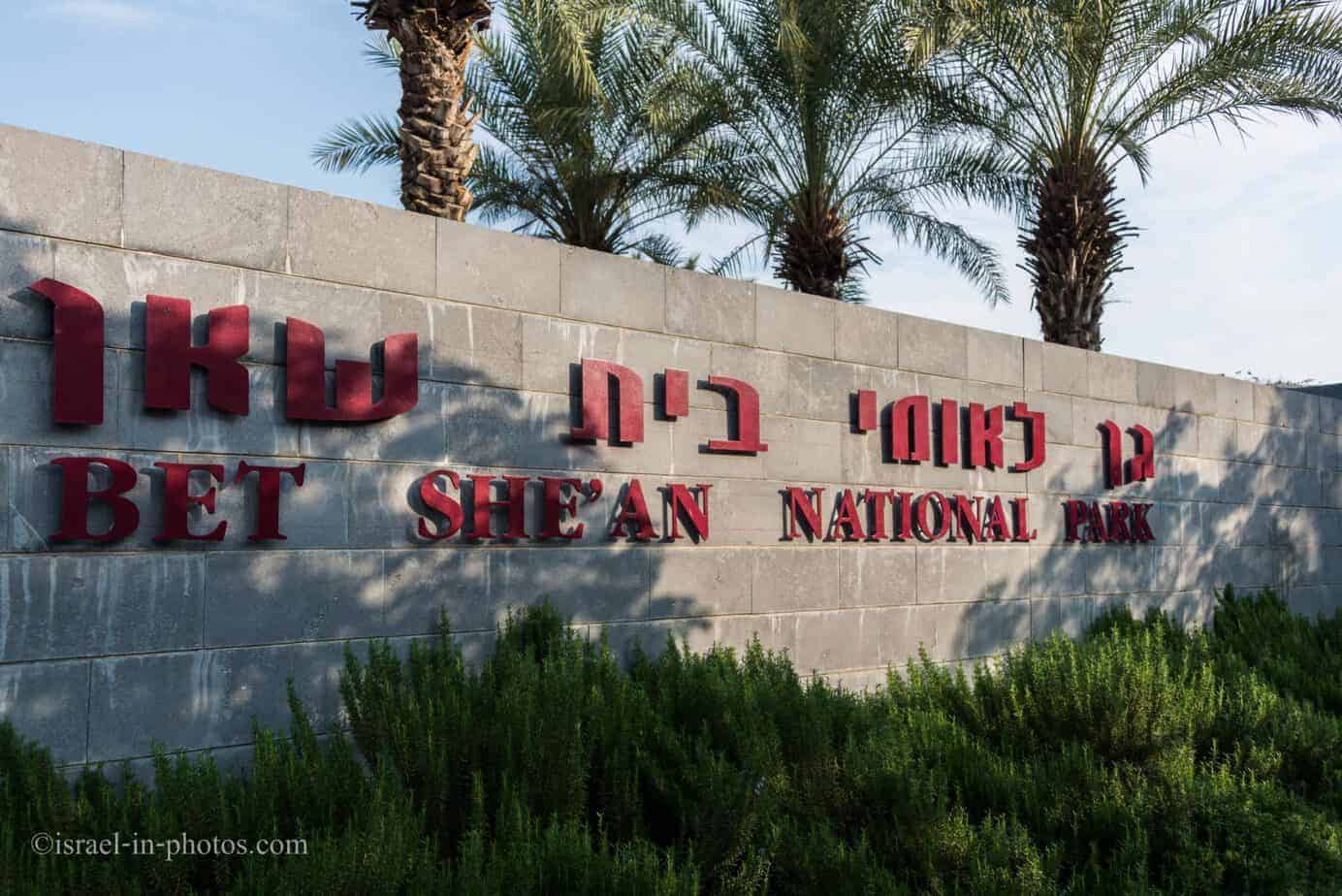

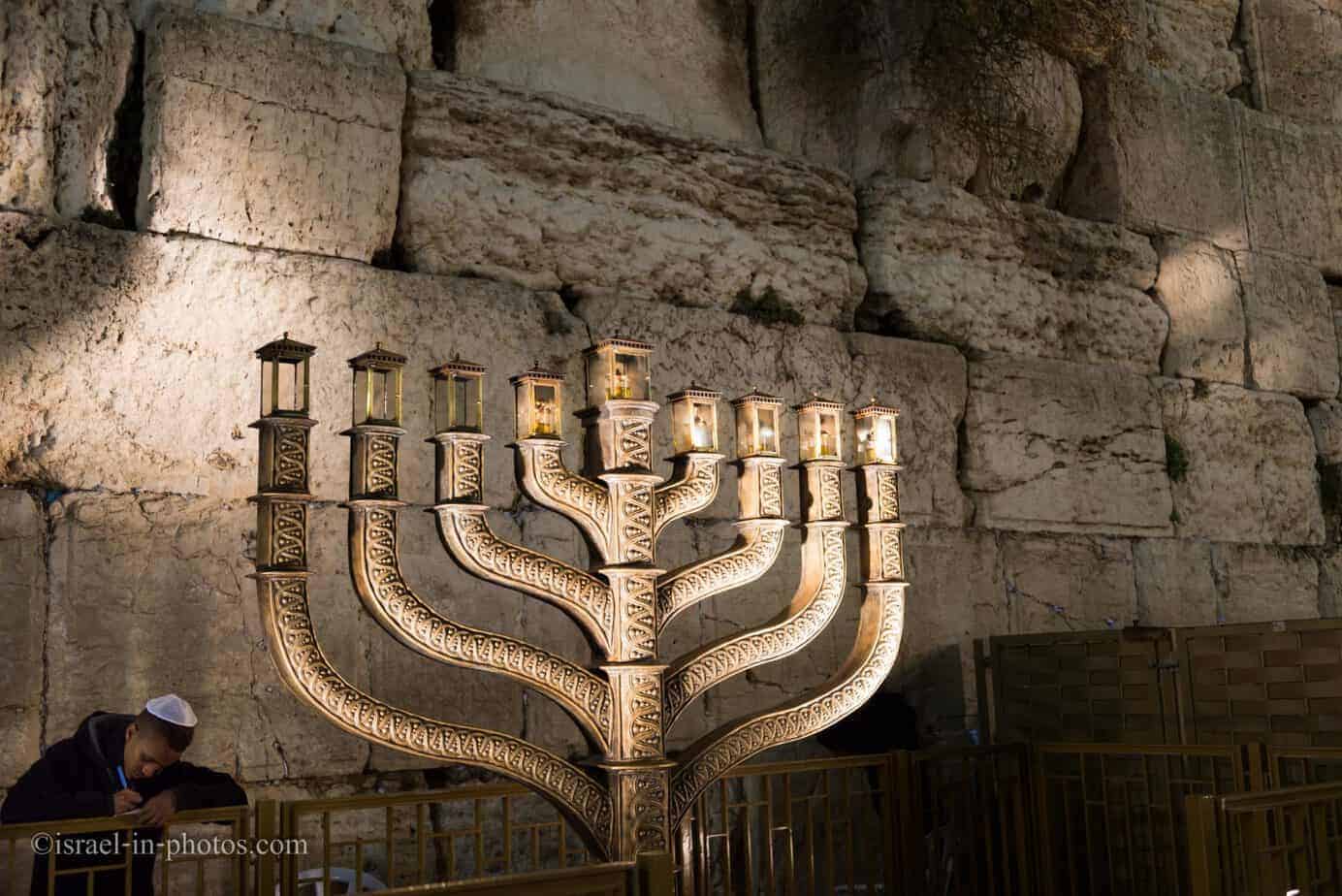


How many steps are there between the point in the Weiss grove and the exit?
אני לא יודע את המספר המדויק, אבל יש הרבה. אני מניח שיש כמה מאות מדרגות.